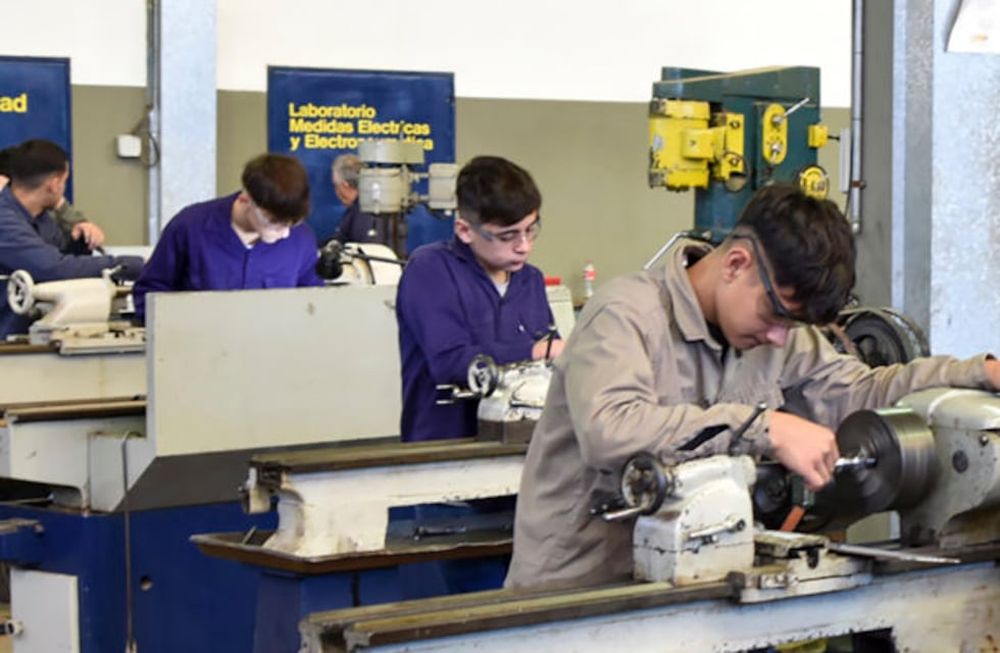Sales of manufacturing SMEs increased, but production fell

Small and medium-sized manufacturing companies saw a 3.4% drop in production in the first quarter , compared to the same period in 2024. The SME Observatory's Current Survey also showed that employment fell by 5%. However, sales, excluding inflation, grew by 15% .
This dissociation between sales and the rest of the variables raises the question of whether the improvement in marketing can be translated into an increase in production or if it is linked to the growing substitution of local manufacturing with imports of finished products , added to the fact that the evolution of prices for Argentine manufacturing has been below both inflation and costs.
Production has varied according to the size of the company. In small companies, the year-on-year decline reached 8.5% —falling to levels below the pandemic level—while in medium-sized companies, there was a 2.3% increase; the first since the fourth quarter of 2023.
Santiago Laugero, president of the Economic Federation of Mendoza (FEM) , noted that certain sectors, such as commerce and construction, have seen an improvement in 2025 compared to 2024, but stressed that this does not mean they are going through a good time. In the first quarter of last year, he recalled, the effects of the high inflation throughout 2023 and the devaluation of December of that year were still being felt.
Hence, both the FEM and CAME (Argentine Confederation of Medium-Sized Enterprises) are choosing to use 2022 as a reference for evaluating the evolution of variables, because in 2023 sales were high, but artificially so, because people didn't want to hold pesos.
He emphasized that trade and industry are still far from reaching historical levels, although certain sectors, such as automobiles and durable goods, are experiencing significant growth, but because they have been doing poorly in recent years and are now trading at prices closer to international levels (in dollars). Meanwhile, other everyday consumption sectors, such as food, remain in a difficult situation. "It's very clear, in the effect of imports on many products with competitive prices," he mentioned.
SME exports will grow by almost 18% in 2024. Illustrative image.

The head of the FEM stated that this is a time of economic change, in which efforts are being made to drive productivity and investment. However, he acknowledged that it is complex, because a company can choose to invest to increase productivity, but wonders how to do so if consumption is low and credit rates are still high. "We are in a necessary and difficult transition. With a lot of structural changes, and we will see how they are resolved," he indicated.
The report prepared by the SME Observatory states that companies felt the impact of the sharp macroeconomic readjustment in 2024, but have not yet recovered their level of activity or employment in the industry. "This is an issue of great concern for the SME sector, which demands productive measures to improve competitive conditions with imported production, especially in a context of growing international competition for the sale of surpluses."
Various organizations, particularly the UIA (Argentine Industrial Union), have been demanding a "leveling of the playing field." That is, while they understand the importance of opening the economy, before facilitating the entry of foreign products, the national, provincial, and municipal tax burden should be reduced to ensure the possibility of real competition.
The organization has also been a driving force behind the new SME Law, which offers tax benefits and better access to financing for these companies. During his recent visit to Mendoza, UIA President Martín Rappallini stated that, although he is in Congress, due to the fact that it is an election year, it is unlikely that it will be discussed in 2025, but that they will still meet with legislators to discuss the importance of this legislation.
E6GGRWZ2NZH7NHPS5HNSAJBUJY.jpg?quality=75&smart=true&auth=764d3a11312c804453bf390c7652a3a2f73cd9fe9e5cc37025a68fa0079844ca&width=980&height=640

Training in trades, but with operational SMEs
The observatory's report also analyzes what's happening with software and IT services SMEs: sales increased by 19% and the number of employees rose by 2%. However, employment levels showed a slowdown in the annual growth.
Furthermore, in the first quarter of 2025, sector prices increased above the exchange rate, and unlike the previous quarter, the quarterly variation was similar to that of the SME Wage Index for the sector. Despite this, there is still a significant gap because prices continue to lag behind both the exchange rate and the trajectory of wage costs.
ConcernsAmong the main concerns expressed by SME entrepreneurs in the manufacturing sector, 64% mentioned sales levels and 51% cited rising wage costs. Furthermore, the threat of imports has increased again, reaching 42% of companies, as has the percentage of companies losing market share due to imports (from 23% to 28%).
Software and IT services companies, on the other hand, are raising concerns about future expansion possibilities. In the first quarter of 2025, concerns about social, political, and economic instability grew (from 54% to 71%), while concerns about low profitability margins (60%) and insufficient financing (44%) remained.
The SME Observatory's Current Survey for the first quarter of 2025 was conducted in April with a sample of 500 companies, statistically representative of two sectors within the segment: Manufacturing and Software and IT Services.
losandes


%3Aformat(jpg)%3Aquality(99)%3Awatermark(f.elconfidencial.com%2Ffile%2Fbae%2Feea%2Ffde%2Fbaeeeafde1b3229287b0c008f7602058.png%2C0%2C275%2C1)%2Ff.elconfidencial.com%2Foriginal%2F525%2F62c%2F4fc%2F52562c4fc6a45b407fb2e756af4c1a27.jpg&w=3840&q=100)


